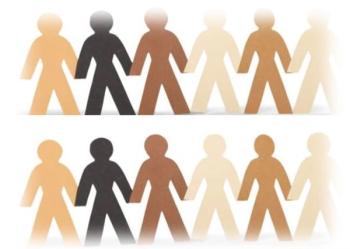
Stroke Symptoms Common Even Without Stroke Diagnosis
BIRMINGHAM, Ala. -- In a national sample of the general population, although weighted in favor of African Americans and the so-called stroke belt, about one in five individuals 45 or older has had undiagnosed cerebrovascular symptoms, investigators reported.
BIRMINGHAM, Ala., Oct. 11 -- In a national sample of the general population, although weighted in favor of African Americans and the so-called stroke belt, about one in five individuals 45 or older has had undiagnosed cerebrovascular symptoms, investigators reported.
They found by a validated questionnaire study that about 18% has had one or more stroke symptoms that were neither recognized by the patients nor diagnosed by physicians. The symptoms included hemibody numbness, painless hemibody weakness, episodes of painless loss of vision in one or both eyes. inability to speak clearly, and inability to understand speech.
These findings emerged from an analysis of data collected from all 50 states, but the sample was weighted in favor of African Americans as well as residents in the southeastern stroke belt.
Participants who had the highest Framingham Stroke Risk Scores were 50% more likely to report stroke symptoms than those with the lowest Framingham scores, Virginia J. Howard, M.S.P.H. of the University of Alabama at Birmingham, and colleagues, reported in the Oct. 10 issue of Archives of Internal Medicine.
Howard and her co-investigators for the REGARDS study (Reasons for Geographic And Racial Differences in Stroke) analyzed data from 18,462 participants who were enrolled in the REGARDS study from Jan. 25, 2003 through Nov. 30, 2005.
Forty-one percent of the participants were African American, 51% were women, and about half lived in states designated as the stroke belt -- Alabama, Arkansas, Georgia, Louisiana, Mississippi, North Carolina, South Carolina and Tennessee -- where the rate of stroke is higher than other areas of the country.
The mean age of participants was 65.8. All participants said they had never been diagnosed with either transient ischemic attack or stroke.
Among the findings:
- 8.5% of participants said they had experienced sudden hemibody numbness.
- 5.8% said they had experienced sudden, painless, hemibody weakness.
- 4.6% reported episodes of sudden, painless loss of vision in one or both eyes.
- 3.8% said they had sudden inability to speak clearly and 2.7% reported sudden inability to understand speech.
Relative to the first quartile of the Framingham Stroke Risk Score, the adjusted odds ratio for one or more stroke symptoms increased from 1.0 (95% confidence interval [CI], 0.90-1.2) in the second quartile to 1.2 (95% CI, 1.1-1.5) and 1.5 (95% CI, 1.3-1.6) in successive quartiles.
In the multivariate analysis, people who rated their general health as fair to poor were more than twice as likely to report stroke symptoms compared to those who said they were in excellent to good health (odd ratio 2.2, 95% confidence interval 2.0-2.4).
Compared with whites, blacks were more likely to report stroke symptoms (OR: 1.2, 95% CI 1.1-1.3) and income less than ,000 was also associated with stroke symptoms versus higher incomes (OR: 1.5, 95% CI 1.3-1.6). Likewise, high school dropouts were more likely to report stroke symptoms than those who had more education (OR 1.4, 95% CI: 1.2-1.6).
Although the study was strengthened by the use of a national general population sample with a large African American cohort, the authors wrote that there is potential for ascertainment bias.
The authors concluded that "these commonly reported symptoms may be mild strokes that failed to reach the threshold for clinical diagnosis."
They recommended targeted "education on the warning signs of stroke and risk factor reduction efforts for individuals who report stroke symptoms may be helpful in improving early recognition and in the prevention of stroke."
Newsletter
Enhance your clinical practice with the Patient Care newsletter, offering the latest evidence-based guidelines, diagnostic insights, and treatment strategies for primary care physicians.






























































































































































































































































































































